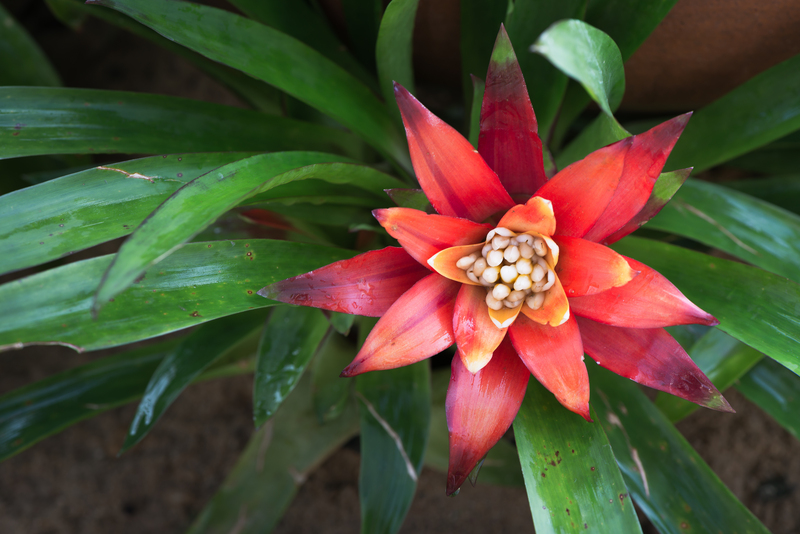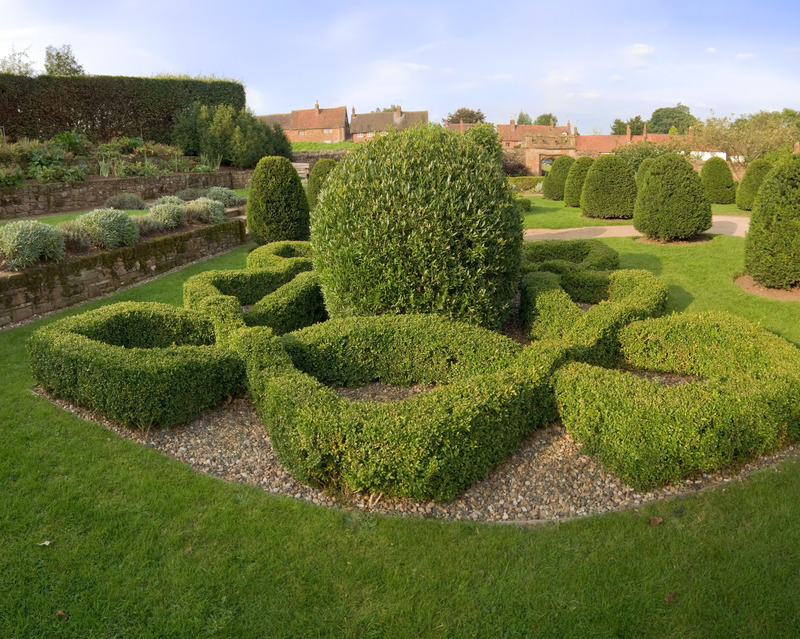Building a Thriving Orchid Collection
Posted on 25/09/2025
Building a Thriving Orchid Collection: Your Comprehensive Guide
Orchids are among the most diverse and captivating plant families on the planet. With stunning blooms and fascinating growth habits, it's no wonder that so many plant lovers are drawn to building a thriving orchid collection. Whether you're an aspiring hobbyist or an experienced grower, cultivating a vibrant assortment of orchids can be both rewarding and challenging.
Why Collect Orchids?
Before we dive deep into the secrets of building a successful orchid collection, it's essential to understand why these extraordinary plants capture the hearts of gardeners across the world. The allure of orchids lies in:
- Amazing diversity: Over 25,000 species and even more hybrids!
- Exquisite beauty: Unique blooms with vibrant colors and intricate patterns.
- Ecological intrigue: Fascinating pollination strategies and growing habits.
- Longevity: Many orchids can bloom annually for decades with proper care.
- Personal challenge: Perfecting orchid care requires both science and art.
Once bitten by the orchid bug, it's hard not to want more. But how do you transition from owning a single plant to nurturing a thriving orchid collection?

Understanding Orchid Varieties
The first step in building an orchid collection is to explore the stunning array of orchid types. Some are beginner-friendly, while others demand more advanced care. Here are several popular groups for collectors:
Phalaenopsis (Moth Orchids)
- Commonly found in garden centers.
- Long-lasting blooms and forgiving care requirements.
- Ideal for first-time collectors.
Cattleya
- Nicknamed the Queen of Orchids for their fragrant and flamboyant flowers.
- Prefer bright light and distinct drying-out periods.
Dendrobium
- Wide range of growth habits, from compact species to tall canes.
- Blooms may last from several weeks to months.
Paphiopedilum (Lady's Slipper Orchids)
- Intriguing pouch-like blooms.
- Enjoy humidity and consistent moisture; ideal for indoor collections.
Oncidium
- Nicknamed "Dancing Ladies" for their fluttering flower sprays.
- Preference for bright, indirect light.
Tip: Begin with resilient species, then branch into more exotic or demanding varieties as your expertise grows.
Selecting Orchids for Your Collection
When starting your orchid collection, consider:
- Growth environment: Indoor lighting, humidity, and temperature ranges in your home or greenhouse.
- Personal aesthetic: Do you prefer dainty miniature blooms or dramatic, showy flowers?
- Space: Some species can grow quite large.
- Skill level: Different orchids require different levels of attention.
- Local availability: Support reputable nurseries and avoid wild-collected plants.
Essential Supplies for a Healthy Orchid Collection
A thriving orchid collection relies on more than just beautiful plants. To keep your orchids healthy, you'll need some specialized supplies:
- Pots and containers: Orchid pots, baskets, or mounts with excellent drainage.
- Orchid media: Bark, sphagnum moss, perlite, charcoal, and other orchid-friendly substrates.
- Fertilizer: Balanced orchid-specific fertilizers for optimal growth.
- Watering tools: Spray bottles or watering cans with narrow spouts for precision.
- Humidity trays: To increase moisture around your orchids.
- Light sources: Grow lights if you lack adequate natural sunlight.
Creating the Ideal Orchid Growing Environment
Light
Every successful orchid collection starts with understanding your lighting situation. Orchids have varying requirements:
- Phalaenopsis: Medium, indirect light (east-facing windows are ideal).
- Cattleyas and Oncidiums: Prefer bright, filtered sunlight (south or west-facing exposure).
- Paphiopedilums: Thrive in low to medium indirect light.
Too much direct sun may scorch leaves, while too little light leads to weak growth and lackluster blooms.
Humidity
- Orchids generally prefer 50-70% humidity.
- Use trays filled with pebbles and water underneath pots, or humidifiers for indoor gardens.
Temperature
- Most orchids are comfortable between 65-80?F (18-27?C) during the day, dropping slightly at night.
- Tip: Consistent night-day temperature drops encourage many orchids to set buds.
Airflow
- Good ventilation is crucial to prevent fungal and bacterial issues.
- Place an oscillating fan nearby, but avoid direct chilly drafts.
Orchid Watering and Feeding Masterclass
Watering Tips
- Overwatering is a leading cause of orchid demise; roots sitting in soggy medium are prone to rot.
- Let the potting medium dry slightly before rewatering.
- Water in the morning to allow dry-out during the day.
- Use lukewarm, distilled, or rainwater if possible--avoid salt buildup from tap water.
Fertilizing Orchids
- Orchids grow best with consistent, diluted fertilizers.
- Apply a balanced orchid food at 1/4 to 1/2 recommended strength every 2-3 weeks when actively growing.
- Flush the pot with plain water occasionally to prevent mineral accumulation.
Repotting and Pruning: Keeping Your Collection Thriving
When to Repot Orchids
- Every 1-2 years or when the potting medium breaks down.
- When roots outgrow the pot or are circling tightly.
- After flowering or if you notice declining plant health.
Proper Repotting Steps
- Gently remove the orchid from its container.
- Trim away any dead or mushy roots with sterilized scissors.
- Replace with fresh, orchid-appropriate media and a just-large-enough pot.
- Wait a few days before resuming regular watering to avoid root rot.
Pro tip: Always repot after the plant finishes blooming to minimize stress.
Pruning Spent Blooms
- Remove dead or dying flower spikes with clean shears.
- This encourages healthy regrowth and future flowering.
Managing Orchid Pests and Diseases
No orchid collection is immune to occasional pests or diseases. Vigilance and early intervention are critical for long-term collection health.
Common Orchid Pests
- Scale insects: Brown or white bumps, sticky residue (honeydew).
- Spider mites: Fine webbing and leaf stippling.
- Mealybugs: Cottony clusters at leaf joints and under leaves.
- Aphids: Small green or black insects feeding on new growth.
Disease Prevention
- Ensure proper air circulation and avoid overwatering.
- Isolate new plants before introducing to your collection.
- Use clean tools and disinfect after each use.
Treatment Solutions
- Remove pests with a cotton swab dipped in rubbing alcohol.
- Use insecticidal soap or neem oil sprays sparingly.
- Discard severely infected plants, if needed, to protect your collection.
Expanding and Displaying Your Orchid Collection
As your orchid collection grows, consider creative ways to display and share your plants:
- Orchid terrariums: Group miniatures or humidity-loving species behind glass.
- Mounting on bark slabs: Showcase epiphytes as they would grow in nature.
- Windowsill arrays: Arrange by light and size for a stunning indoor garden.
- Hanging baskets: Perfect for vining or cascading orchid species.
- Join orchid societies: Trade divisions, connect with other enthusiasts, and participate in shows.
Learning and Improving: Become an Orchid Expert
The best orchid collections are built over time, with patience and constant learning. Enhance your skills by:
- Reading books and trusted online resources on orchid care.
- Attending local orchid society meetings and shows.
- Practicing with new orchid genera and hybrids.
- Keeping a plant journal for watering, feeding, and blooming cycles.
Learning from experience--both your own and fellow collectors'--is the secret sauce to a flourishing collection.

Frequently Asked Questions about Orchid Collection Success
How do I encourage my orchids to rebloom?
Most orchids need a rest period after blooming and a slight drop in nighttime temperatures to trigger new flower spikes. Maintain proper light and feeding for best results.
Is it difficult to keep a variety of orchid species together?
As your orchid collection grows, group plants by their care requirements--especially light and humidity needs. This makes it easier to maintain optimal conditions for each type.
Where can I buy unusual or rare orchids?
Seek out reputable orchid nurseries, specialty online vendors, and orchid shows. Avoid buying wild-collected species, as this endangers fragile ecosystems.
What is the easiest orchid for beginners?
Phalaenopsis and Dendrobium hybrids are usually the easiest choices, forgiving of beginner mistakes, and rewarding with beautiful blooms.
Conclusion: Start Building Your Orchid Paradise
Building a thriving orchid collection is a journey filled with beauty, discovery, and satisfaction. Armed with knowledge about orchid varieties, their care needs, and effective growing techniques, you can fill your home or greenhouse with these exotic wonders. Remember to start simple, focus on plant health, and enjoy the learning process. In time, your flourishing orchid collection will become both a personal sanctuary and a living work of art.
Happy growing, and may your orchids reward you with years of spectacular blooms!

